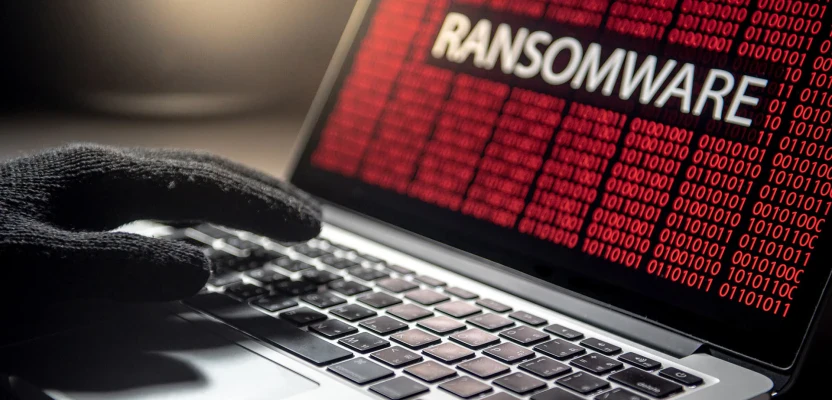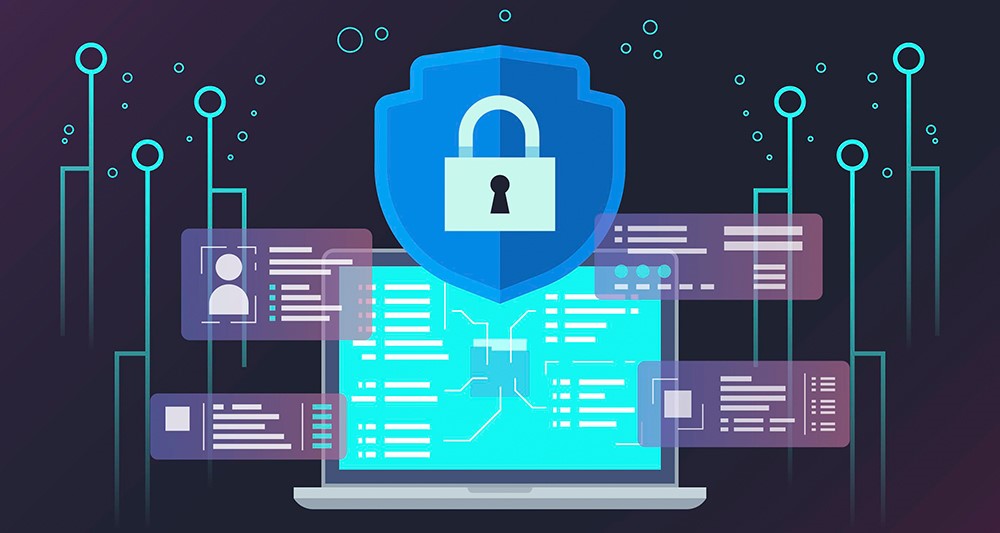
Ransomware attacks can be devastating, locking you out of your own files and demanding payment in exchange for access. These malicious software variants are not only a threat to individual users but also to businesses of all sizes. Understanding how to effectively remove ransomware and mitigate its consequences is crucial for maintaining digital security and integrity.
- What is ransomware?
- Pre-infection preparation
- Immediate actions post-infection
- Recovery process
- Conclusion
- FAQs
What is ransomware?
Ransomware is a type of malicious software (malware) designed to block access to a computer system or encrypt data until a sum of money, or ransom, is paid. This formidable cyber threat has grown in prominence and sophistication, impacting individuals, businesses, and government agencies worldwide.
When ransomware infects a system, it typically encrypts the user's files using robust cryptographic algorithms. The victim is then presented with a message explaining that their data has been locked and demanding payment to restore access. The ransom usually must be paid in cryptocurrencies like Bitcoin, providing anonymity to the attackers.
Types of ransomware
Ransomware comes in various forms, adapting to different vulnerabilities and user behaviors:
- Crypto ransomware. Encrypts valuable data such as documents, images, and databases. Victims must pay to get the decryption key.
- Locker ransomware. Locks the user out of the operating system, making it impossible to access the desktop and any apps or files. The files are not encrypted, but the computer itself becomes unusable.
- Scareware. Fakes infections and bombards the user with alerts and demands for money to fix the issue. This type may not actually harm files but uses intimidation to extort victims.
How ransomware spreads
Ransomware can infect systems through several avenues:
- Phishing emails. These emails contain malicious attachments or links that, once opened, can deploy ransomware directly onto the computer.
- Exploit kits. Found on compromised websites, these kits run scripts to check for vulnerabilities in a visitor’s computer and exploit these weaknesses to install ransomware.
- Remote Desktop Protocol (RDP) attacks. Attackers use RDP, a network communications protocol for remote connections, to gain control over computers and deploy ransomware.
Pre-infection preparation

Regular data backup
The cornerstone of ransomware preparedness is robust data backup. Regularly backing up your data ensures that you can restore your information without paying the ransom. Here are some best practices:
- Backup frequency. Perform backups daily or weekly depending on how frequently your data changes.
- 3-2-1 backup rule. Keep at least three copies of your data, store them on two different types of media, and keep one backup copy offsite or in the cloud
- Test backups. Regularly test your backups to confirm that they work and data can be restored.
Update and patch systems
Cybercriminals exploit vulnerabilities in software and operating systems to deploy ransomware. Keeping your systems up to date is a critical preventive measure:
- Regular updates. Install updates for software and operating systems as soon as they become available.
- Automate updates. Where possible, enable automatic updates to eliminate delays in applying critical patches.
- Security patches. Prioritize security patches, especially those that close known vulnerabilities exploited by ransomware.
Advanced security software
Use advanced security solutions to detect and prevent ransomware attacks:
- Antivirus and anti-malware. Install and maintain reputable antivirus and anti-malware software with real-time scanning capabilities.
- Endpoint protection. Deploy endpoint security solutions that can detect abnormal behavior and block ransomware execution.
- Email security. Use email security tools that scan for malicious attachments and links, which are common entry points for ransomware.
Employee training and awareness
Humans often represent the weakest link in security. Educating your team can dramatically reduce the risk of ransomware:
- Phishing training. Conduct regular training sessions to teach employees how to recognize phishing emails and malicious websites.
- Security best practices. Educate employees on the importance of using strong, unique passwords and securing their devices.
- Regular updates. Keep the team informed about new cyber threats and preventive measures through regular communications.
Network security enhancements
Strengthen your network to resist ransomware attacks:
- Firewall configuration. Use firewalls to block unauthorized access to your network.
- Segmentation. Divide your network into segments to limit the spread of ransomware if one segment gets infected.
- Access controls. Implement strict access controls and user permissions to minimize the number of users who have access to sensitive data.
Immediate actions post-infection

1. Isolate the infected systems
To prevent the spread of ransomware within your network, it's critical to isolate affected systems as soon as possible:
- Disconnect from network. Remove the infected devices from all network connections, whether wired, wireless, or via Bluetooth.
- Isolate segments. If possible, isolate affected segments of your network to contain the ransomware.
- Turn off shared resources. Disable any shared storage or network drives to protect uninfected areas.
2. Identify the type of ransomware
Understanding the type of ransomware you are dealing with can help in determining the appropriate response:
- Use identification tools. Utilize tools like ID Ransomware to identify the ransomware variant based on the ransom note or the file extension used.
- Research online. Look for information about the specific ransomware variant to learn about its behavior, decryption possibilities, and other victims' experiences.
3. Secure your backups
Before attempting any removal or decryption, ensure that your backups are secure and uninfected:
- Check backup integrity. Verify that your backups are not compromised and are up-to-date.
- Keep backups disconnected. Ensure that backups remain disconnected from the network to avoid contamination.
4. Report the incident
Reporting the attack to the appropriate authorities can provide you with additional resources and help prevent future incidents:
- Contact law enforcement. Inform local or national law enforcement agencies that specialize in cybercrimes.
- Notify regulatory bodies. If applicable, report the breach to relevant regulatory authorities to comply with data breach laws.
5. Consult cybersecurity professionals
Dealing with ransomware can be complex, and professional guidance is often necessary:
- Hire experts. Consider engaging cybersecurity experts who specialize in malware and ransomware mitigation.
- Seek legal advice. Consult with legal professionals to understand the implications of the attack and any necessary disclosures.
6. Assess the damage
Understanding the scope of the impact is essential for recovery and future prevention strategies:
- Identify compromised data. Determine which data has been encrypted and assess the sensitivity and value of the affected data.
- Document everything. Keep a detailed record of the ransomware attack, including all communications with the attackers, as this can be crucial for law enforcement and recovery efforts.
7. Avoid paying the ransom
While paying the ransom may seem like a quick solution, it carries significant risks and no guarantees:
- No guarantee of decryption. Paying the ransom does not guarantee that your data will be decrypted or that the malware will be removed from your systems.
- Future targeting. Paying can also mark you as a target for future attacks.
Recovery process

1. Assess and contain the damage
The initial focus should be on assessing the full extent of the damage and ensuring that the ransomware can no longer cause harm:
- Confirm infection removal. Ensure that all traces of the ransomware have been removed from your systems using professional cybersecurity tools and expertise.
2. Decryption and data recovery
Once the threat is neutralized, the next step is to attempt data recovery:
- Seek decryption tools. Check online resources like No More Ransom for decryption tools that may be available for your specific ransomware variant.
- Consult with professionals. Cybersecurity professionals can provide guidance and services to decrypt your data where possible.
3. Restore data from backups
If decryption isn’t feasible, restoring your data from backups will be the next course of action:
- Verify backup integrity. Confirm that your backups are free of the ransomware infection before restoration.
- Restore files. Carefully restore your data to your cleaned systems, ensuring not to reintroduce the ransomware.
4. Update and fortify security measures
Post-recovery is an opportune time to fortify your systems against future attacks:
- Implement robust security software. Invest in high-quality antivirus and anti-ransomware software with real-time monitoring and automatic updates.
- Enhance email security. Strengthen email security to filter out phishing attempts and malicious attachments.
- Regularly update software. Keep all operating systems and applications up to date to protect against vulnerabilities.
5. Conduct a post-incident review
A thorough review after an attack is crucial for improving security protocols and preparedness:
- Analyze the attack. Review how the ransomware entered your network, what was affected, and the effectiveness of your response.
- Update incident response plan. Refine your incident response strategy based on lessons learned to improve handling of any future incidents.
Conclusion
Ransomware poses a significant threat, but with the right preparation and knowledge, its impact can be minimized. Regular backups, vigilant security practices, and a clear response plan are your best defenses against this disruptive type of malware. Stay informed, stay secure, and remember that prevention is the most effective form of protection.
FAQs
How can I remove ransomware from my computer?
To remove ransomware:
- Use a reliable anti-malware tool to scan and remove the malware from your system.
- Restore your files from a backup if possible.
- Check online for any decryption tools available specifically for the ransomware variant you have encountered.
Are there free tools available to decrypt ransomware?
Yes, there are several free tools available that can decrypt many types of ransomware infections. Websites like No More Ransom provide a collection of decryption tools and are regularly updated as new decryption methodologies are developed.
What should I do if my backups are also encrypted?
If your backups are encrypted, seek professional help from a cybersecurity expert. They might be able to recover data or suggest other specific steps you can take based on the type of ransomware and the extent of the encryption.
How can I identify the type of ransomware on my computer?
You can use tools like ID Ransomware, which allow you to upload a ransom note or a sample encrypted file. These tools will analyze the data and try to identify the ransomware variant you are dealing with.
Can ransomware spread across a network?
Yes, some ransomware is designed to spread across networks. It can infect not only your local machine but also any connected drives or networked computers. That's why isolating the infected device is a critical first step.



Comments 0